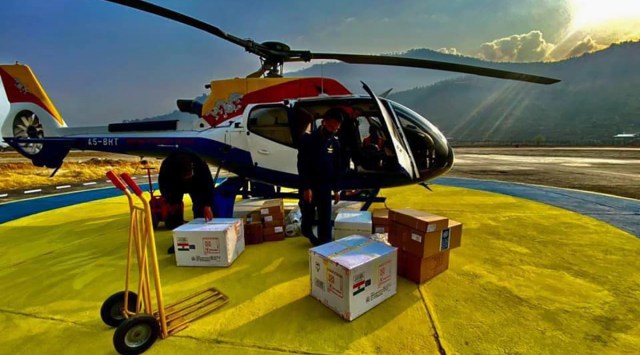While India has historically come to Bhutan’s aid — from helping in the 5-year plans since the 1960s, or natural calamities such as 2007 floods or 2009 earthquake — as the second surge of Covid-19 pandemic overwhelmed India’s healthcare system and led to a shortage of medical oxygen, the tables have turned. The small Himalayan nation has come to the rescue of its mighty neighbour.
From a state health minister’s brainwave to South Block’s intervention, and from the Indian ambassador’s prompt approach to the Bhutanese King’s personal attention, this is a story of close-knit coordination between states, the Centre, embassy, and a foreign country.

The Sunday Express spoke to officials in both countries to piece together the story that India is likely to get 40 metric tonnes of oxygen every day — equivalent to 10,000 Oxygen cylinders — from Bhutan next month.
Story continues below this ad
On April 25, Himanta Biswa Sarma, then Assam Health minister and the state’s new Chief Minister, was chatting with Pravin Jain, director of Guwahati-based Meghalaya Oxygen company, about their joint venture project in eastern Bhutanese district of Samdrup Jongkhar, only 7 km opposite Assam’s Baksa district. During the conversation, Jain mention that their plans to produce liquid oxygen in Bhutan had been put on hold due to pandemic-related restrictions in the neighbouring nation.
At the time, Assam was reporting around 2,000 or so daily Covid-19 cases, and the ferocity of the second wave was still far away in the Northeast.
But the situation was grim in the National Capital Region. Top hospitals were facing shortage of oxygen supply, leading to death of many patients. Prime Minister Narendra Modi and chief ministers had been told that the peak may go up to 5 lakh to 6 lakh cases per day.
In Delhi, on April 25, reported cases had gone past 22,000 that day — the highest since the pandemic began last year.
Story continues below this ad
Sarma sensed an opportunity to augment medical oxygen availability not only for Assam but also for other states in the region. He immediately called up External Affairs Minister S Jaishankar and insisted that India explore the possibility of importing liquid oxygen from Bhutan.
On Jaishankar’s directions, Indian Ambassador to Bhutan, Ruchira Kamboj, took up the matter with the country’s top leadership. Sarma also briefed Kamboj.
Sources said Kamboj’s personal access and rapport with Bhutan’s King Jigme Khesar Namgyel Wangchuck, or K5 as he is popularly known, and other dignitaries helped move the levers at a faster pace.
“The King responded immediately with a royal decree, and within an hour all approvals were accorded by Bhutanese authorities for setting up the oxygen plant of S D Cryogenics Gases,” an official told The Sunday Express.
Story continues below this ad
The official said the approval was significant in view of the “stringent health and quarantine protocols in place, with no exceptions even for the royalty. By that evening, action was under way at the site.”
At that point, Bhutan was reporting about four new cases per day, as per the Johns Hopkins University data dashboard.
Confirming the sequence of events, Sarma told The Sunday Express, “The oxygen plant will be commissioned next month.”
This oxygen will be supplied to Manipur as well, where cases are rising, a source said.
Story continues below this ad
On Saturday, Sarma thanked Jaishankar, Kamboj and Bhutan’s king for their intervention after he gave the idea.
S D Cryogenics Gases is owned 51 per cent by the Bhutanese side, with Sonam Dhupa as the Bhutanese director.
The plant will supply around 40 MT liquid oxygen per day (equivalent to around 10,000 oxygen cylinders), which will be transported to India in cryogenic tankers. It is expected to become operational next month, and the Bhutan king is personally monitoring its progress and visited Motanga Industrial Park in Bhutan on the border with India, it is learnt.
Kamboj told The Sunday Express, “Bhutan’s response was exceptionally prompt and supportive, reflective of the immense goodwill that exists for India in Bhutan. We are deeply grateful to His Majesty the King who has made this possible at a critical juncture for India.”
Story continues below this ad
Bhutan’s “special decision to assist India is a reflection of the enormous goodwill that India enjoys in that country”, a South Block official said.
“Since the onset of Covid-19, India has resolutely stood by Bhutan, ensuring uninterrupted supply of essential and non-essential commodities, opening five new trade routes, and delivering medical supplies, equipment and vaccines,” the official said.









